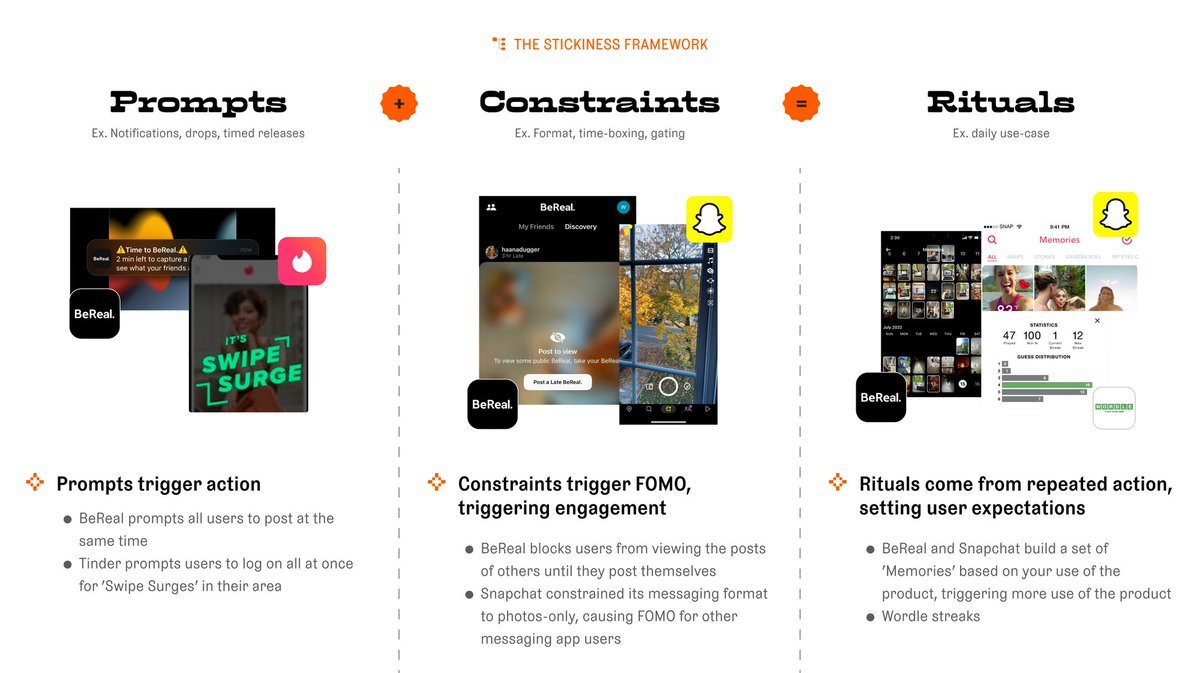
I used to believe that a great app idea was enough to make it successful. But after countless failed products, now I know better The stickiness framework has been my lifeline: 1️⃣ Trigger action with prompts 2️⃣ Ignite FOMO with constraints 3️⃣ Keep 'em coming back with rituals https://t.co/oVIDEPv2yD

Not only does a product have to appeal to the hard side of the network, but as I discuss in “The Killer Product,” the most successful network effects–driven apps are also sometimes dead simple. They eschew a long list of features and instead emphasize the interactions among people using the
Andrew Chen • The Cold Start Problem: How to Start and Scale Network Effects
To build a habit-forming product, makers need to attach the use of their solution to a frequently felt internal trigger and know how to leverage external triggers to drive the user to action.
Nir Eyal • Hooked: How to Build Habit-Forming Products
Unlike competitors who went after vague behaviors like “build a healthy lifestyle,” Fitbod sought to own the internal trigger related to the uncomfortable feeling of uncertainty of not knowing what to do in the gym.
Nir Eyal • Hooked: How to Build Habit-Forming Products
Content and communications might be a series of how-to videos teaching effective use of LinkedIn’s connection features. And an incentive might look like a free subscription when the user completes certain actions. A product road map can be generated with hundreds of these ideas, large and small, and then prioritized.